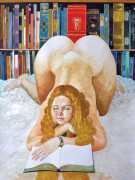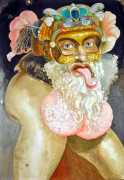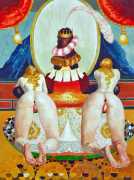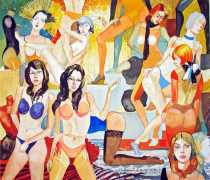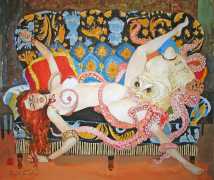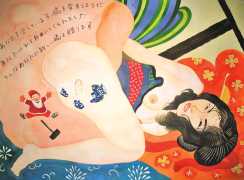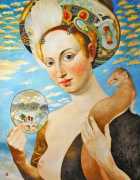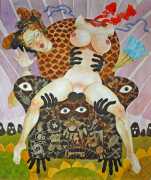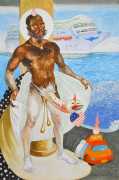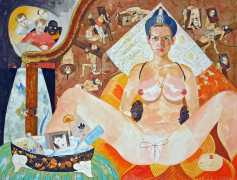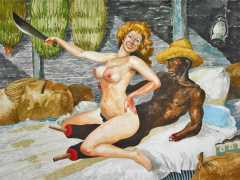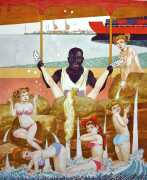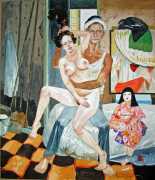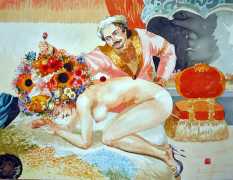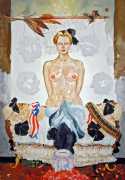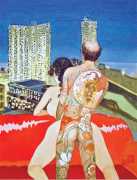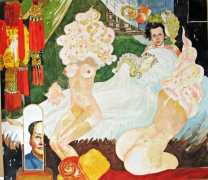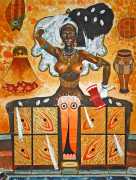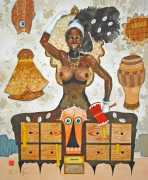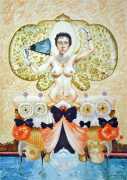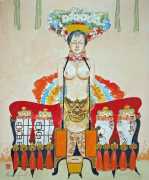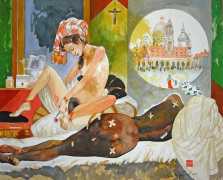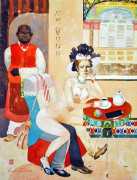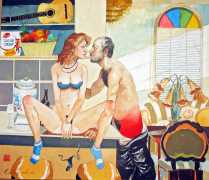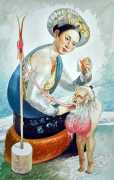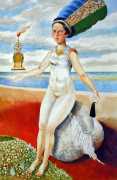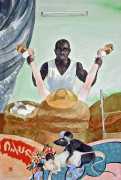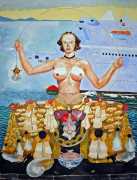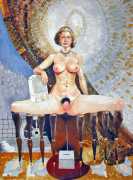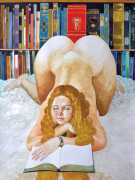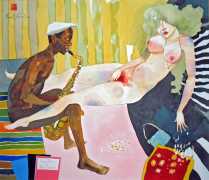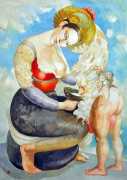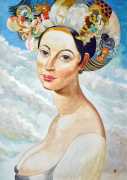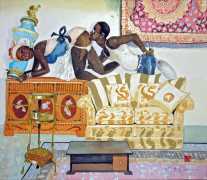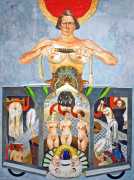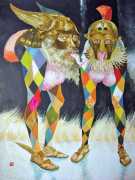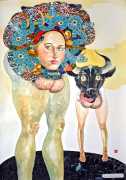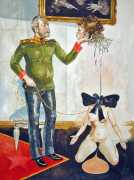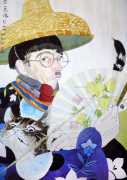 Ernesto Jorge Ferriol is a rare hybrid, raised and trained in his native Cuba, but for more than two decades living and working in Japan. Both artistic traditions have had a deep impact on his work.
Ernesto Jorge Ferriol is a rare hybrid, raised and trained in his native Cuba, but for more than two decades living and working in Japan. Both artistic traditions have had a deep impact on his work.
Ferriol grew up in Holguin in eastern Cuba. From an early age he loved painting and drawing, and in 1985, when he was just fourteen, he enrolled at the Raúl Gómez García Vocational Art School, four years later moving to the El Alba School of Plastic Art. In 1995 he became a student at the Higher Institute of Art in Havana, and started exhibiting the same year. In 2003 he was the first Cuban artist to participate in the Japanese Festival of Arts in Kyoto, and was invited back in 2004 and 2005. This immersion in Japanese culture persuaded him that Japan was, at least for the time being, his true cultural home, and he has lived and worked in Osaka ever since.
Any sense of Ernesto Ferriol’s output would be incomplete without taking account of the experiences he accumulated in moving from Cuba to Japan. Leading up to the journey he encountered Japanese works depicting scenes from history, folk tales, travel scenes, landscapes, flora, fauna, and erotica known as Ukiyo-e. Within Ukiyo-e is a subgenre known as Shunga, which literally means ‘pictures of spring’, another way of describing sexual activity. Ferriol’s work became a blend of both cultures, culminating in what he refers to as ‘Tropical Shunga’. Ferriol’s paintings refer at the same time to contemporary Cuban literature and Japanese artistic traditions, sometimes creating a fragmented symbolism, presenting both the beautiful and the grotesque within the same canvas. Both are presented with the same relevance, embellishing each and often producing a confusing effect for the viewer, as so often happens in everyday life.
Ernesto Ferriol’s Instagram page, where he regularly posts new work, can be found here.
We are very grateful to our Russian friend Yuri for introducing us to the work of this artist.

